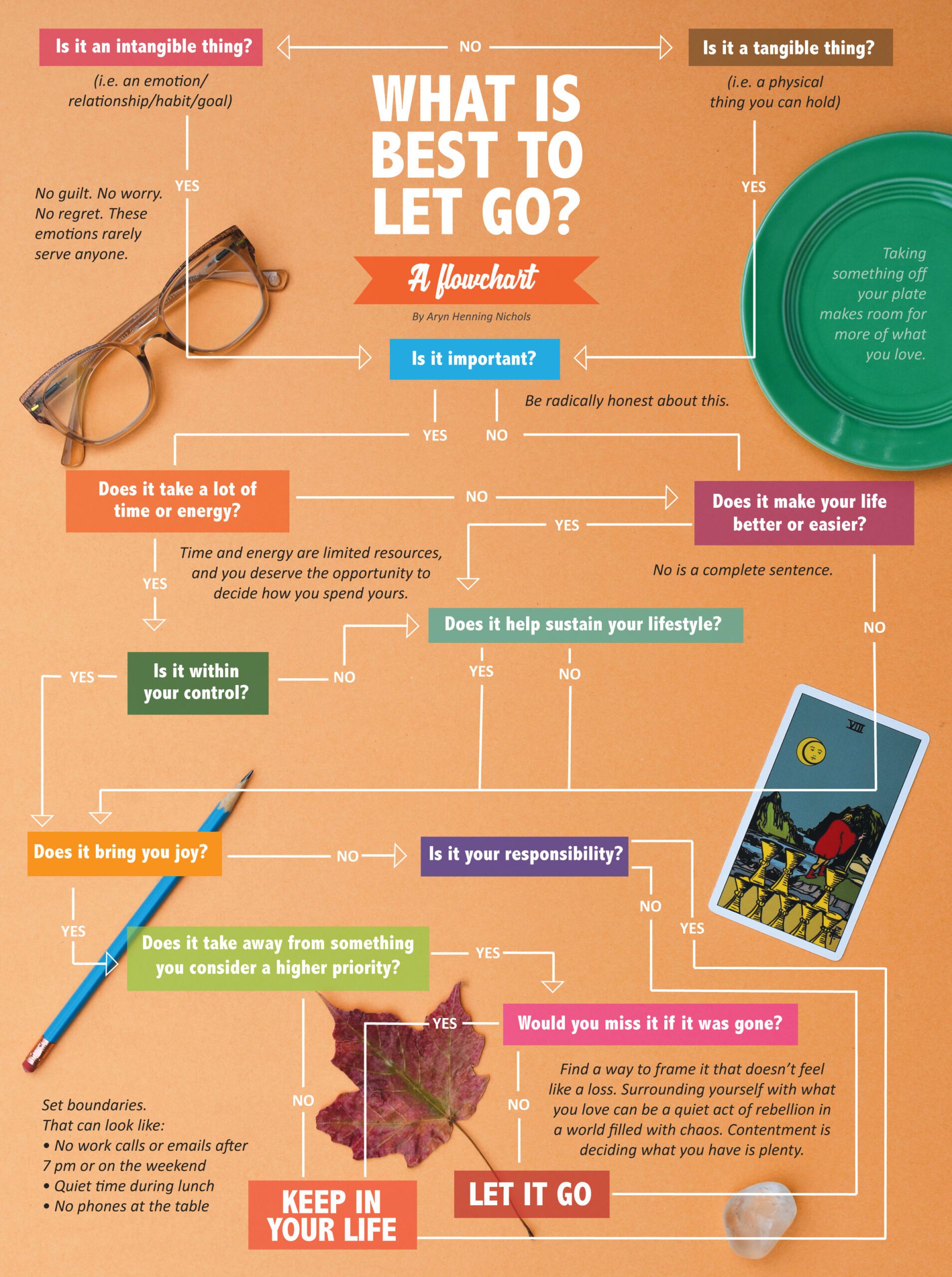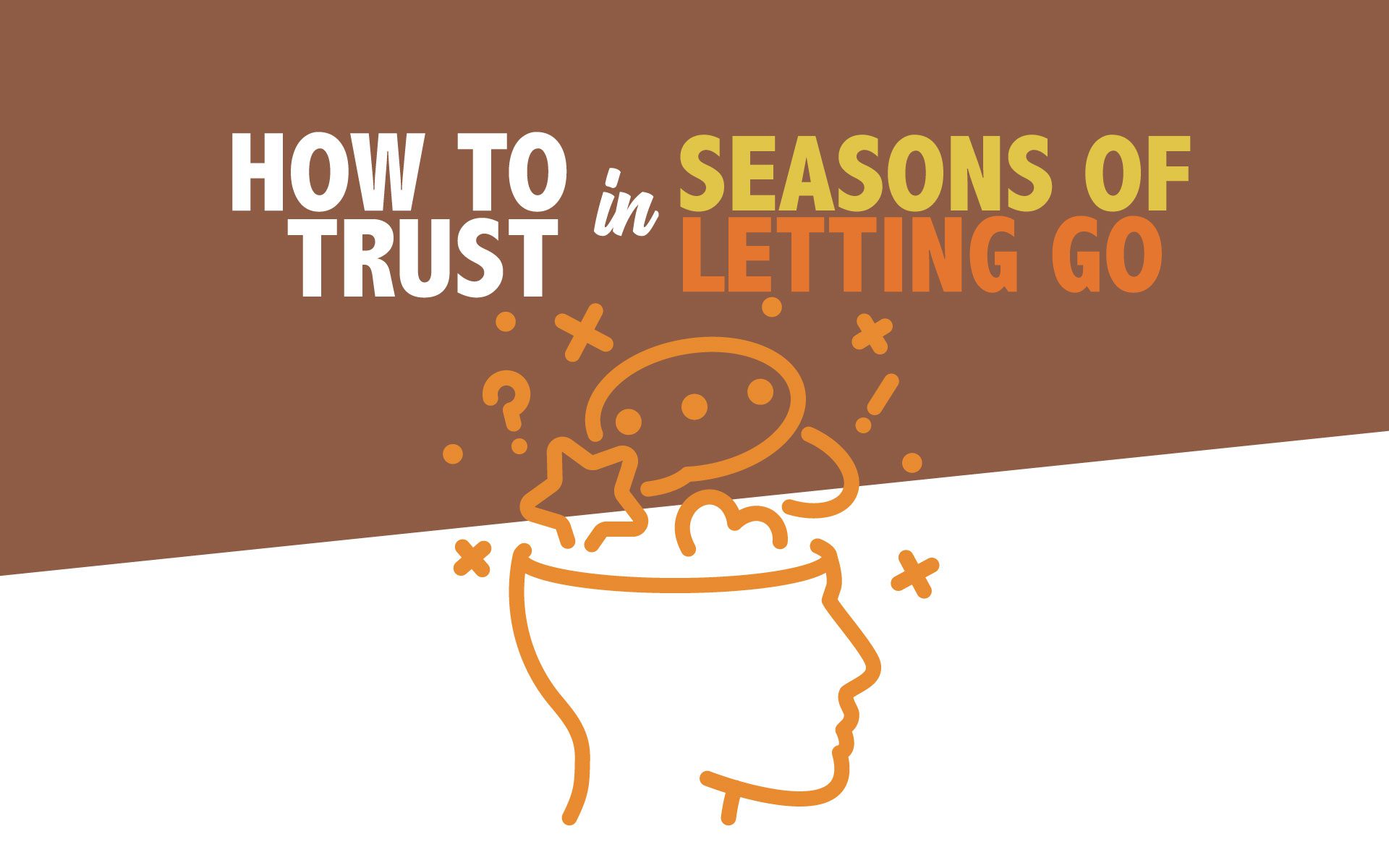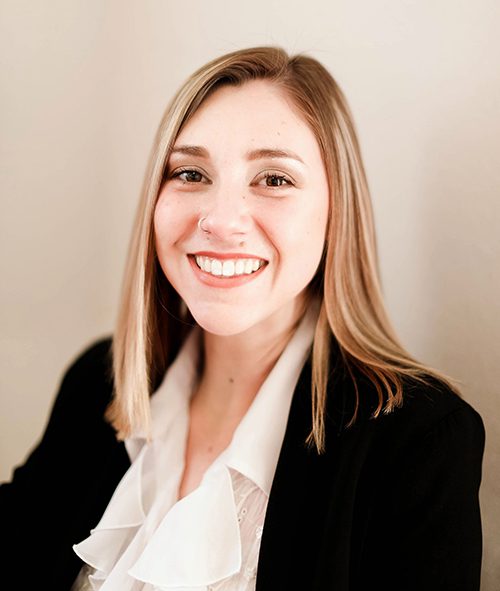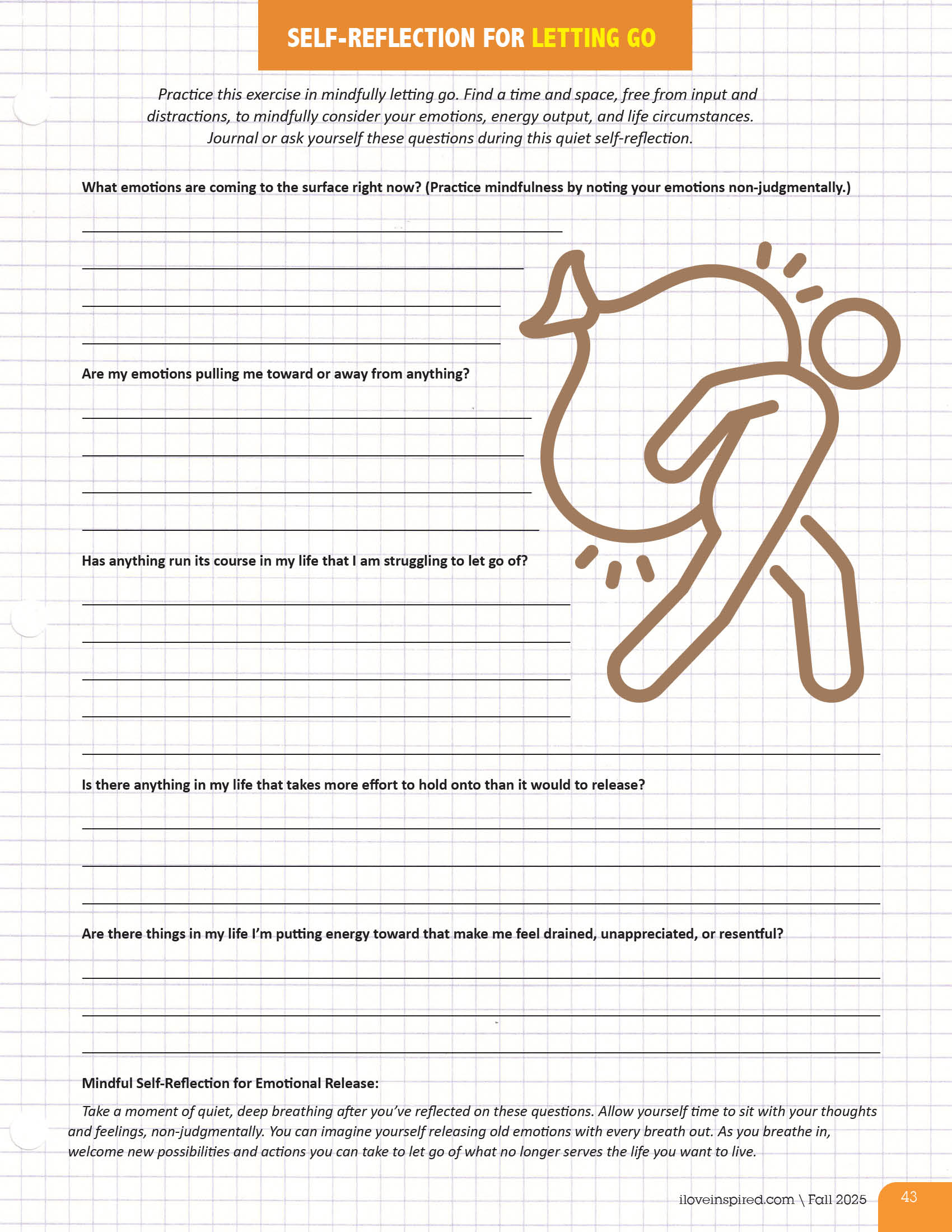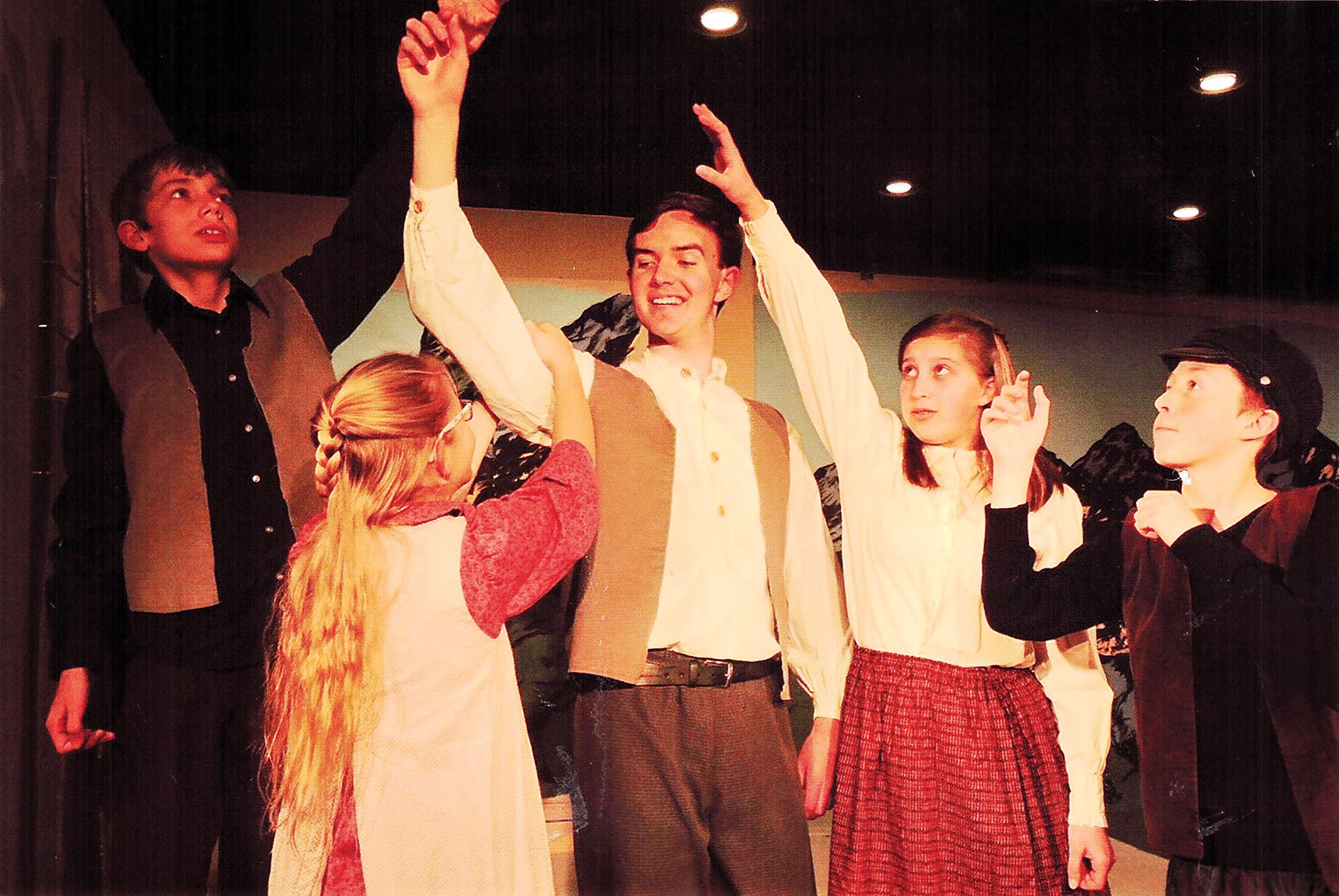
Decorah’s community theatre group, New Minowa Players, have been welcoming people into its unique and vibrant family for the last 50 years. Since the troupe’s inception in 1975, through ups and downs, changes and challenges, the organization’s driving force has remained the same: an undying love for live theatre and commitment to community.
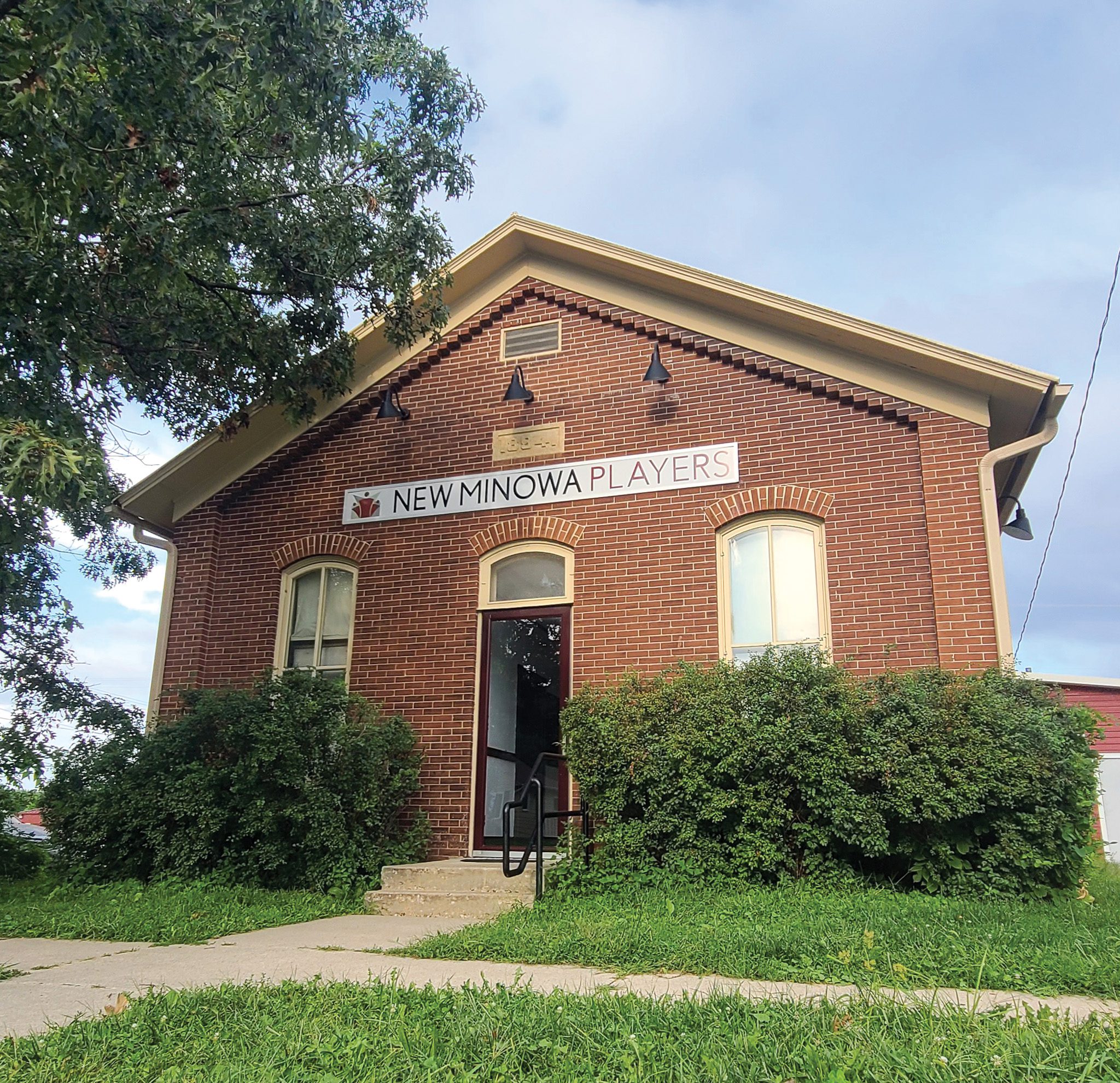
“This is a place where you don’t have to question whether or not you’ll be accepted,” says Gabe Twedt, the New Minowa Players Board President. “Having a safe, welcoming space is a huge asset to the community. . .this is an organization that wants to hold you up and support you.”
In turn, the community holds the New Minowa Players (NMP) up, ensuring the group is able to continue producing shows and providing Decorah with a vibrant performing arts tradition. Each of the organization’s six yearly shows are put on entirely by volunteers committed to making performing arts accessible for all. The group tends to draw members in from varied backgrounds – even those with no previous theatre experience.
For Sheryl Scheffert, one of NMP’s longest-standing active members, it started with a phone call from a friend looking for a pianist to accompany a show. That was in 1986, and Sheryl has been an integral part of the group ever since. She can be found directing, adapting shows for the Children’s Production, or filling in other positions as needed.
“I had never participated in theatre before that call,” Sheryl says. “The fact that I’m so involved all these years later is a real testament to the organization.”
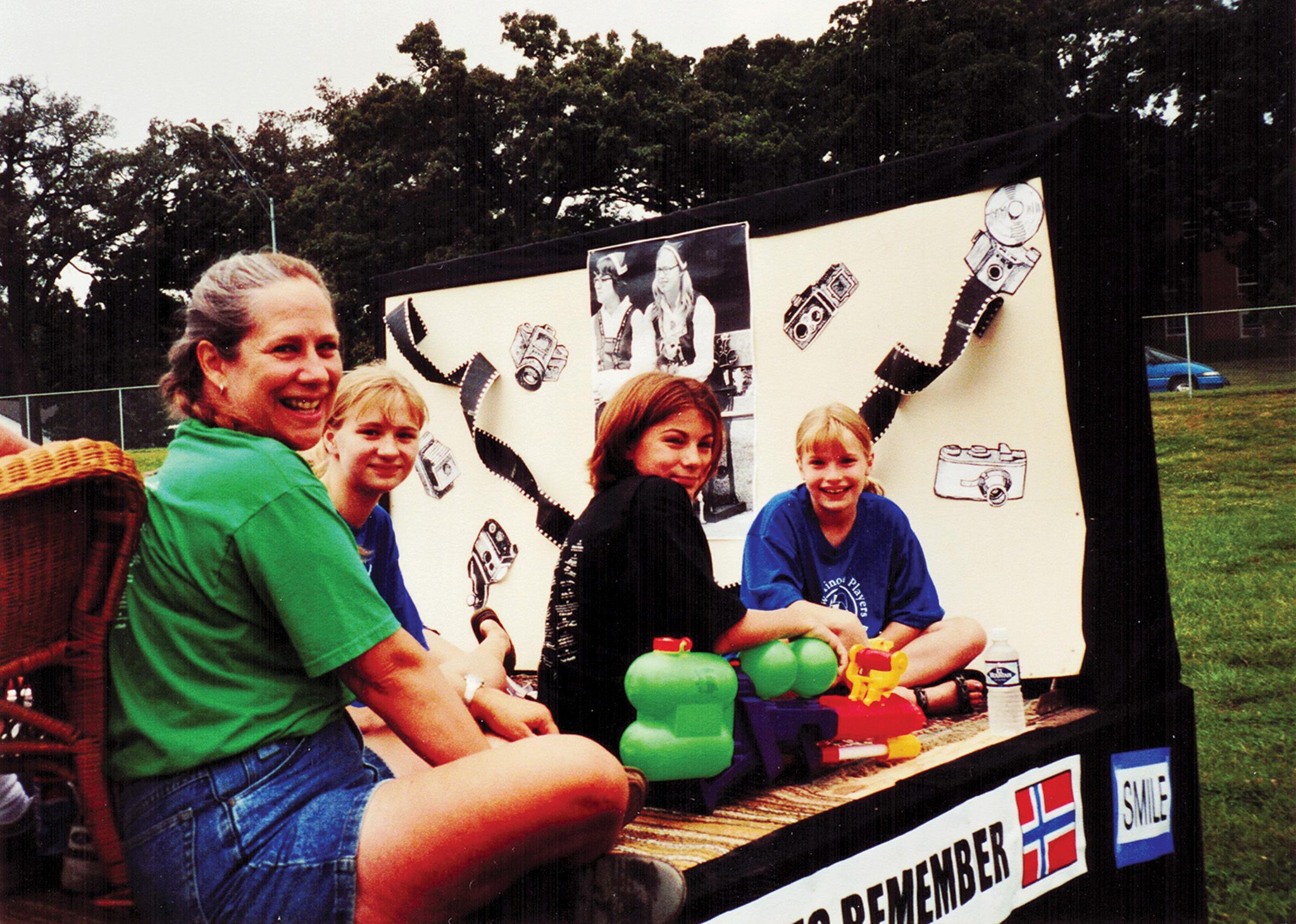
It’s also common for former members and participants to return to the NMP fold after taking a break, reintegrating seamlessly, regardless of how long they were away. NMP’s vice president of the board, Sarah Brandt, first joined as a sophomore in high school. She pursued a theatre degree at Luther College, then moved to Minneapolis after graduation. When she found herself back in the Driftless, she didn’t hesitate to rejoin NMP.
“It always feels like coming home, no matter how long you’ve been gone,” says Sarah.
NMP volunteers and supporters contribute in many ways, from acting, to holding a backstage role such as stage-managing or helping with sets to simply enjoying a show. The themes and content of each production vary considerably, providing the audience opportunities to engage with difficult topics, travel to far-away worlds, or enjoy an evening full of laughter and old-fashioned fun.
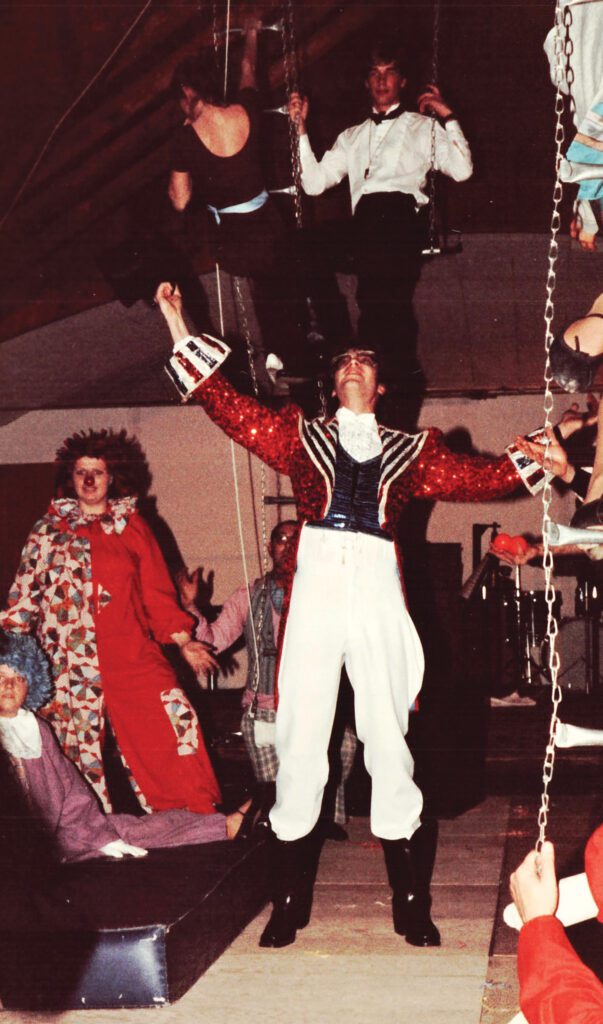
“Every show is a capsule of community,” says Sheryl. “All different backgrounds and interests overlap, and each show sees the forming of a new cohesive group.”
These ambitious programs are a testament to how far the organization has come. When founders Bette Greedy, Donalee Burns, and Helen Schmidt – now affectionately known as the “founding mothers” – staged their first show in 1975, it was a true passion project, built from the ground up. At the time, the group did not have a regular season, simply focusing on one show at a time whenever they could scrape together enough support and volunteers.
“A six-show season is incredible and rare for a fully volunteer community theatre,” says Sarah.
Each August, the season opens with the Young People’s Production, designed to be put on entirely by youth ranging from middle-school to college-aged, including all directorial, tech, and backstage roles. Next is the Children’s Production, featuring a cast of budding actors up to 8th grade, with performances near the end of October.
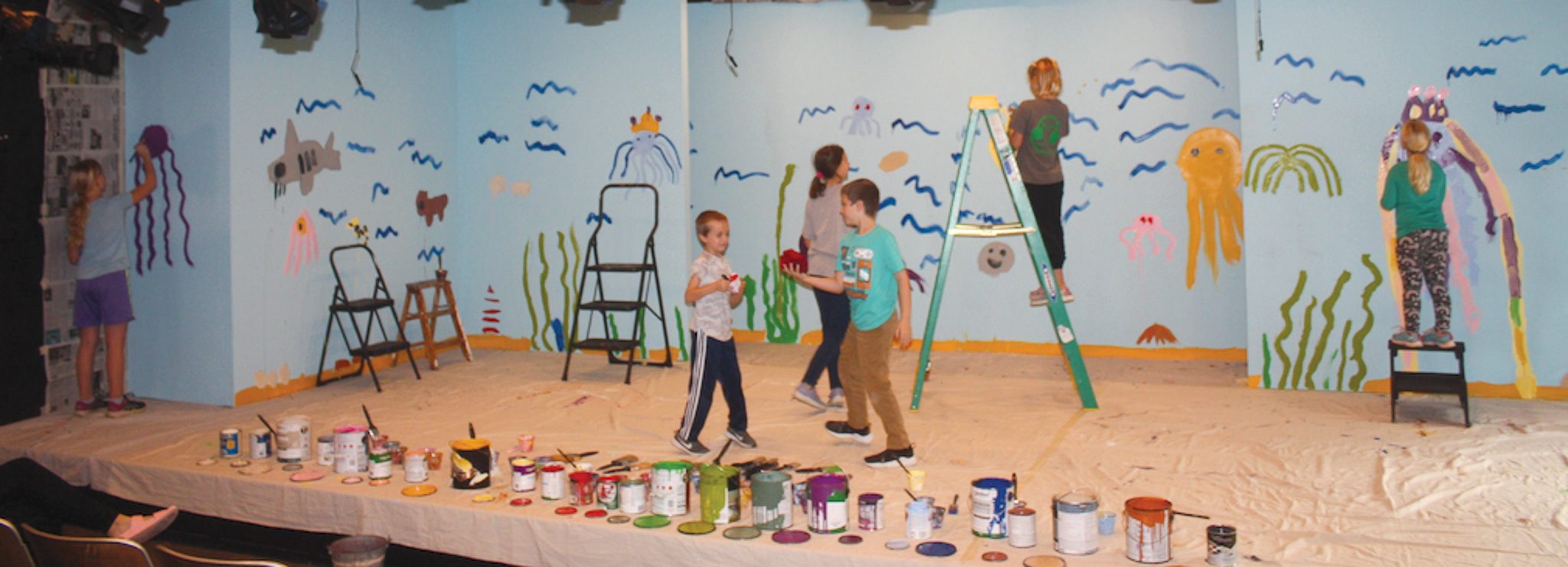
While many theatres build their season program internally before putting out the call for directors, actors, and other participants, NMP does it differently by asking creatives to submit ideas for shows that excite them, allowing the group to take chances and risks they might not have taken otherwise. November’s Creative Venture production is a great example of this, reserved for shows that might be seen as experimental or outside-the-box. This year’s slot is filled by a one-person show, something NMP has never done before.
In January, NMP puts on a larger, family-friendly production which typically spans at least two weekends, offering somewhere between 4-7 performances; the Spring Show occurs in March or April; and the season culminates with the Summer Show at the end of June.
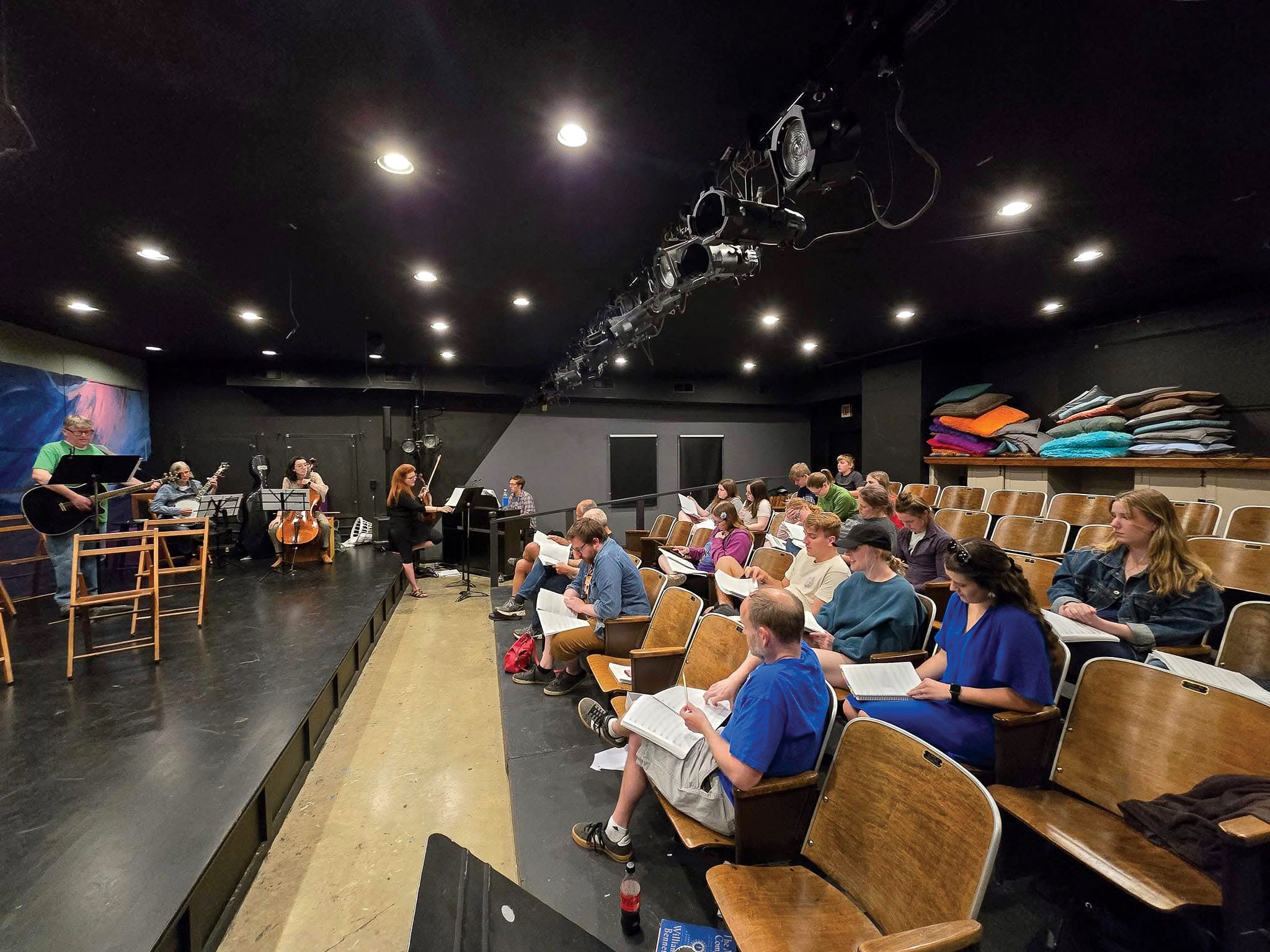
While most productions are now performed in NMP’s own theatre space in Decorah, for many of its formative years the organization bounced around various venues, like restaurants and outdoor theatres, in Decorah and surrounding communities. The company’s current building, purchased in 1981, originally served as storage, a workshop, and occasional rehearsal space. In 2006, they decided to turn it into a permanent performance space, the construction of which was a true community effort, with seats coming from the Waukon High School and many, many volunteer hours spent refurbishing spaces and equipment.

The result is a perfectly cozy, roughly 60-seat auditorium that is home to a majority of NMP performances. Periodically, shows will still occur at other locations to accommodate larger audiences, like the popular Summer Show that’s typically at the Decorah High School auditorium.
“That part of the season [leading up to the Summer Show] feels like the greatest manifestation of all the principles this organization was built on,” says Sarah. “It’s when you can tangibly feel the whole community rally around the theatre and everyone wants to be involved.”
Sheryl fondly reminisces about the group putting on Les Misérables a few years ago, recalling the way the whole town truly came alive with anticipation then, as well.
“Members of the community would literally approach me in the street, offering to help with the production,” she says. “There was a huge buzz. . . it was so cool to see the impact really reach beyond the theatre walls.”
The lineup of NMP’s 50th anniversary season is both an homage to the group’s history, as well as a manifestation of the change and exploration still yet to come.
“We have a mix of old and new shows coming up, allowing us to reflect on our historic performances while also exploring some exciting avenues and directions that we haven’t had a chance to before,” says Gabe.
If you’re looking to experience the magic of live theatre, don’t hesitate to consider auditioning or volunteering behind the scenes. Even if you don’t have experience or know anyone already involved with the group, don’t worry – you’ll be fully welcomed into the New Minowa Players family.
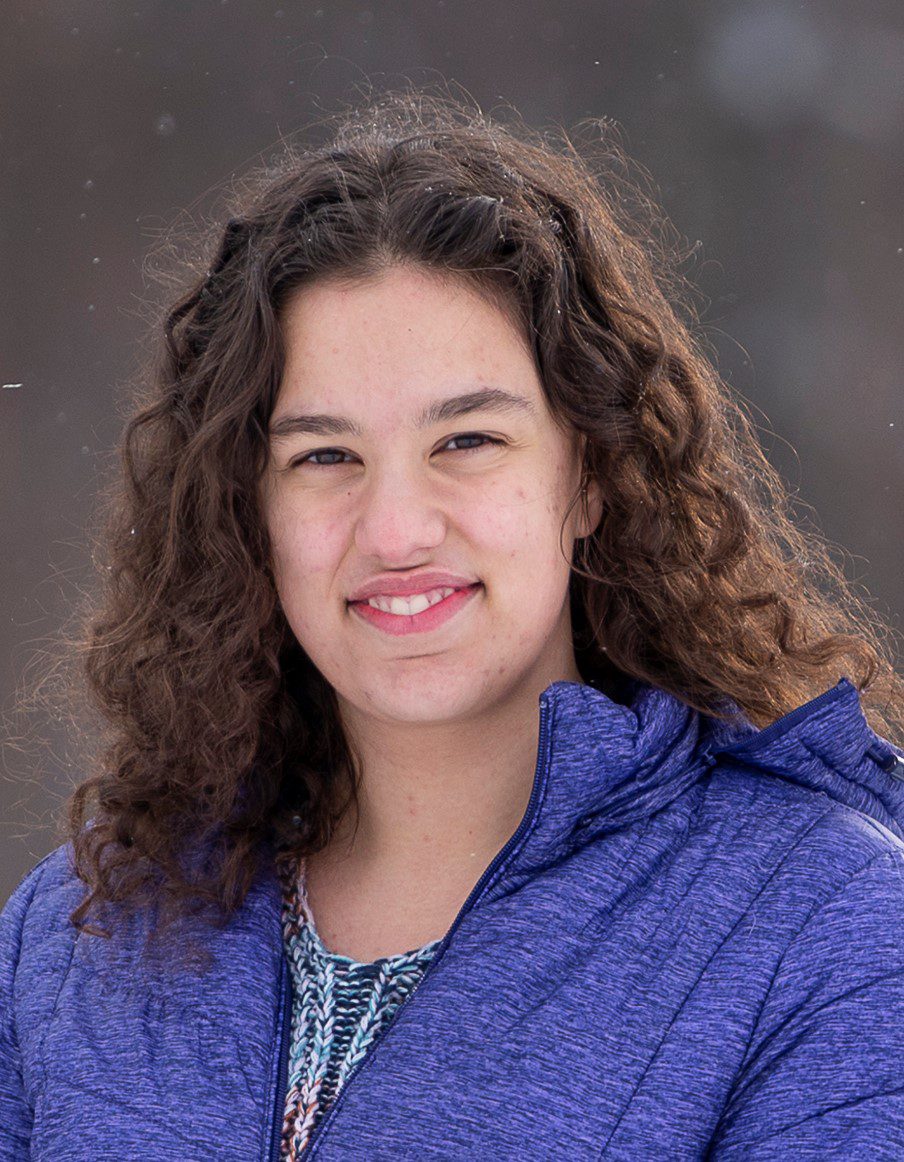
Clara Wodny
Clara Wodny is a recent graduate of Luther College, where she earned degrees in English and Visual Communications. A freelance journalist and illustrator, she regularly contributes to publications such as Iowa Natural Heritage, Visual Art Journal, and, of course, Inspire(d) Magazine. She is currently doing a pottery apprenticeship while she figures out what to do next!
Upcoming 2025-26 New Minowa Players 50th Anniversary Shows:
October 23-26: Children’s Show – Winnie the Pooh
October 31 & November 1: Halloween Haunted House at NMP
November 6-9: Creative Venture – An Iliad
January 22-25, 30 & 31, 2026: Winter Show – You’re a Good Man, Charlie Brown
March 7, 2026: 50th Anniversary Celebration Gala at Peace Dining Room, Luther College
April 9-12, 2026: Spring Show – You Can’t Take It with You
June 25-28, 2026: Summer Musical – Into the Woods
Nordic Fest 2026: One-Act Showcase
newminowaplayers.org





